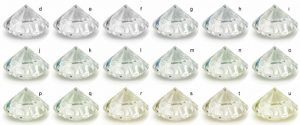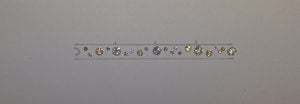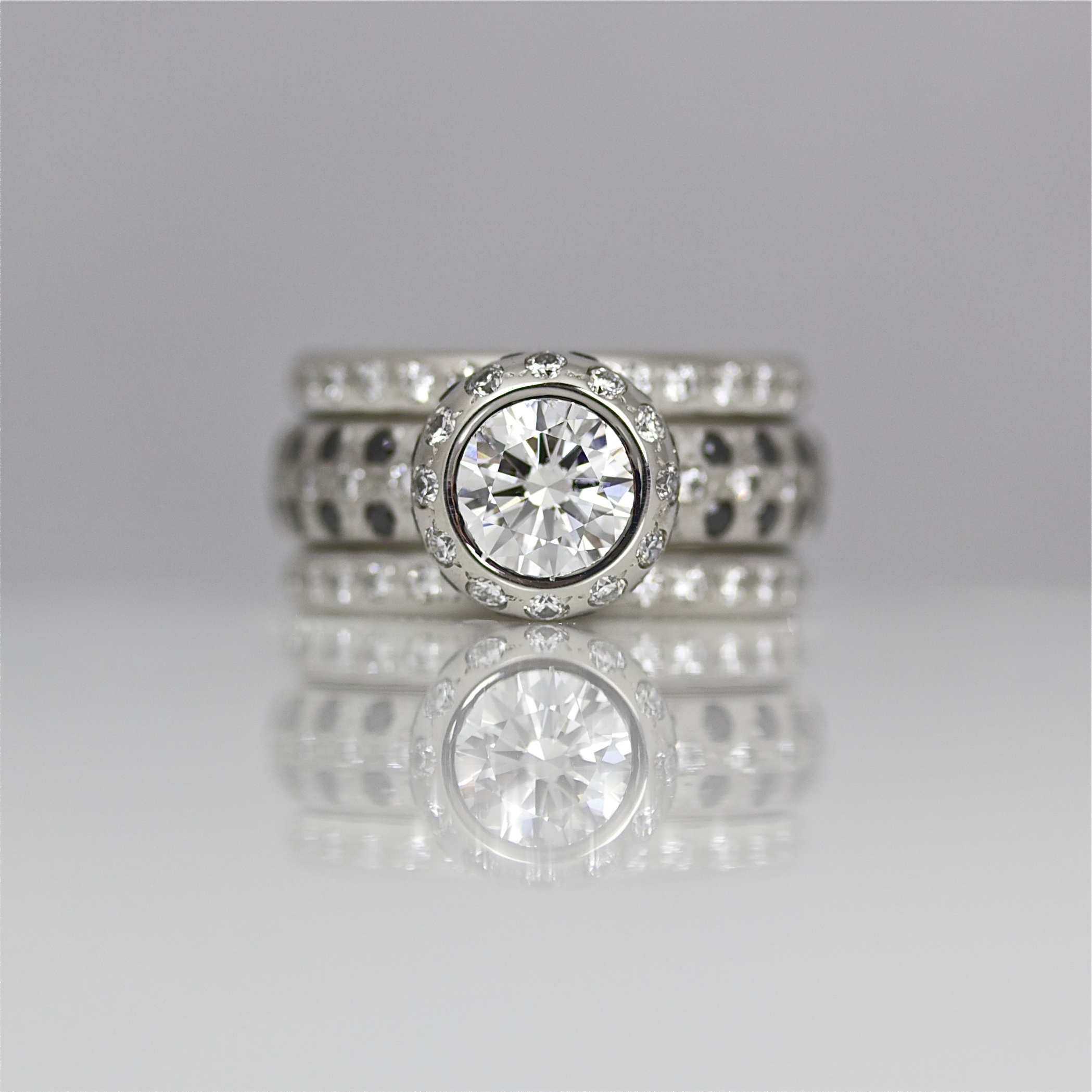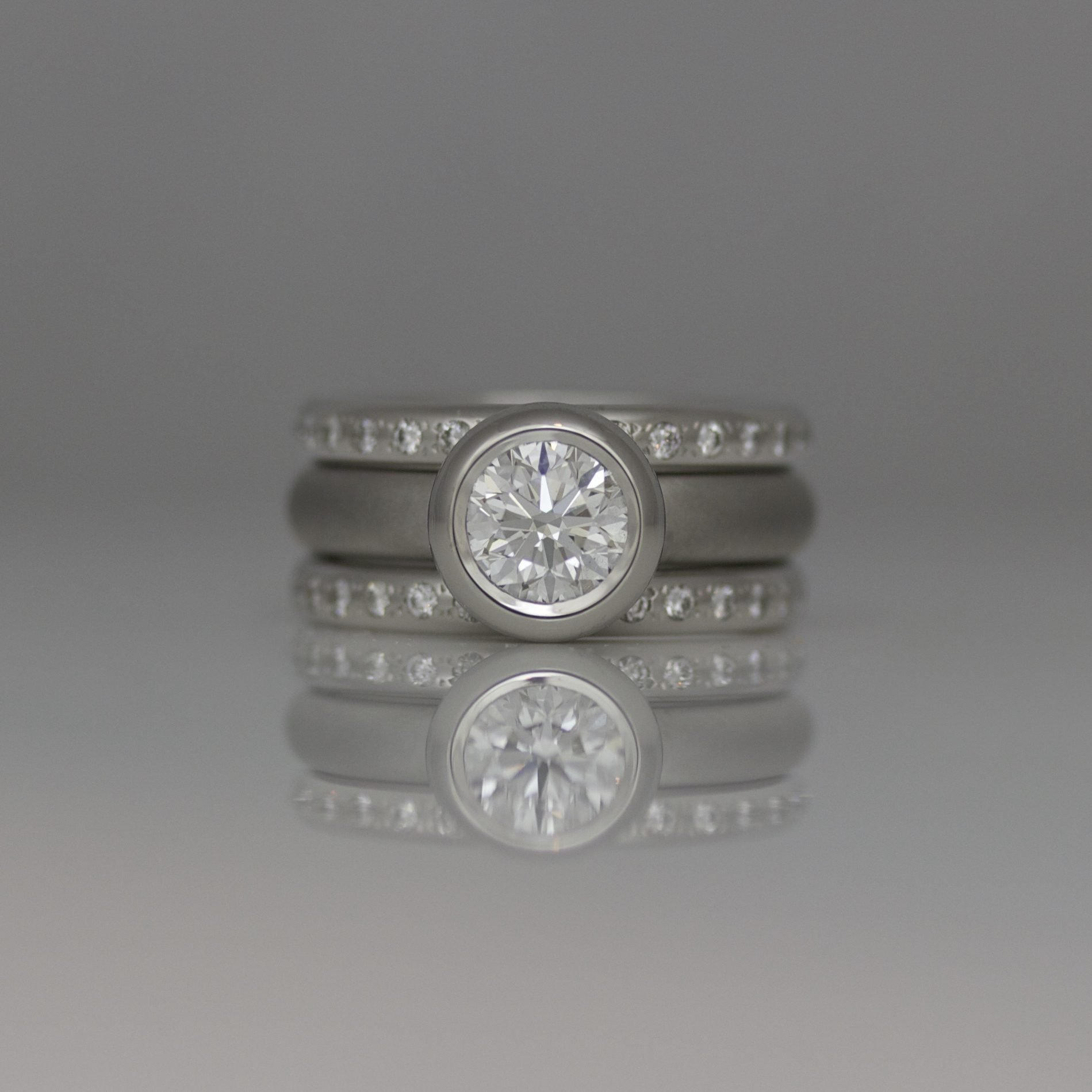Diamond, the name coming from the Greek adámas “unbreakable”, pure crystalline carbon, the hardest natural substance, treasured for centuries due to its rarity and beauty.
diamonds-all-you-need-to-know-(part 1)-colour diamonds-all-you-need-to-diamonds-all-you-need-to-know-(part 1)-colouknow-(part 1)-colour
I’m not sure if it’s possible, but I’m going to try to give an insight into the massive subject that is diamonds, first thinking two blogs, I now think maybe three.
diamonds-all-you-need-to-know-(part 1)-colour
I’ve been handling and dealing with diamonds for coming up 40 years. My experience and knowledge has taught me that the best thing is to actually look at diamonds. I am yet to meet someone who says a lower quality diamond looks the same or as beautiful as a fine one, but at what point is the increase in cost worthwhile. diamonds-all-you-need-to-know-(part 1)-colour
Increasing in the trade, especially on-line, computer-generated images are used rather than honest unedited photographs, giving a false impression. Diamonds are a science, there is a reason why finer quality diamonds look more beautiful. They have the advantage of being the hardest gemstone, so make perfect stones for engagement rings that need to be durable. diamonds-all-you-need-to-know-(part 1)-colour
We have this idea that all diamonds are perfectly clear, white and bright, that is very rare, most are yellowish and cloudy, faceted to maximize the price rather than the beauty. Higher quality diamonds look brighter and sparkle more, they cost more but look superior, I’d always recommend buying the best quality you can, rather than the biggest you can.
The obvious way to break this vast subject down is to the four C’s. This blog will deal with colour, and the next clarity then carat and cut, the way we quantify the quality and therefore the value of a diamond. diamonds-all-you-need-to-know-(part 1)-colour
Colour:
Ideally colourless, or white, we grade diamonds D through to Z, D being the whitest, or colourless. It is only possible to accurately grade diamonds unset, looking through the diamonds longest plain, with the culet pointing upwards. Most labs have a set of master stones, to ascertain the nearest color match. The yellow is nitrogen caught within the carbon, the more nitrogen the more yellow the diamond appears. D through to G is generally considered colourless, most people not perceiving yellow above this point. A majority of diamonds show a vague yellow tint, colour D is a very pure white, icy, but due to the rarity it is substantially more expensive than say a more commercial J or K. When you see a colour D, or even E,F or G , you can appreciate why it is more expensive, especially when set in platinum. When you look at a colour H, I or J, they don’t look yellow, but they don’t look white, just a bit odd, slightly mucky, as if they’ve been put in the wash with something yellow, lacking the brightness you expect in a diamond. It is important to go for a good colour diamond, more so than good clarity. Colour is perceived more quickly and easily than clarity, it is a waste of money going down on colour, and up on clarity.

I get a selection of diamonds in for most commissions, generally to a budget. I line this selection up, when invited to say the one they like best, it’s the whiter ones that the customer generally prefers, often instinct, perceiving the whiteness or rather lack of colour, rather that me telling them its the whitest.
A bit of a trick of the trade is to put an off white diamond in yellow gold, as it makes the diamonds yellow appear less so.
There are also what we call fancies, stones which can be pretty much any colour, the rarity dictating value. There are various shades of yellow, as mentioned caused by nitrogen, blues are coloured by boron, and the pinks by plastic deformation
In order of rarity, yellow diamond is followed by brown, colorless, then by blue, green, black, pink, orange, purple, and red. Discover more about natural fancy diamonds.

It is possible to artificially treat diamonds to change the colour. Treated diamonds are significantly cheaper than natural fancies. diamonds-all-you-need-to-know-(part 1)-colour
Coloured diamonds are a whole subject, which I’ll deal with in another blog, but they are a real passion of mine.
Discover how we clarity grade diamonds
Save
Save
Save
Save
Save
Save
Save
Save


